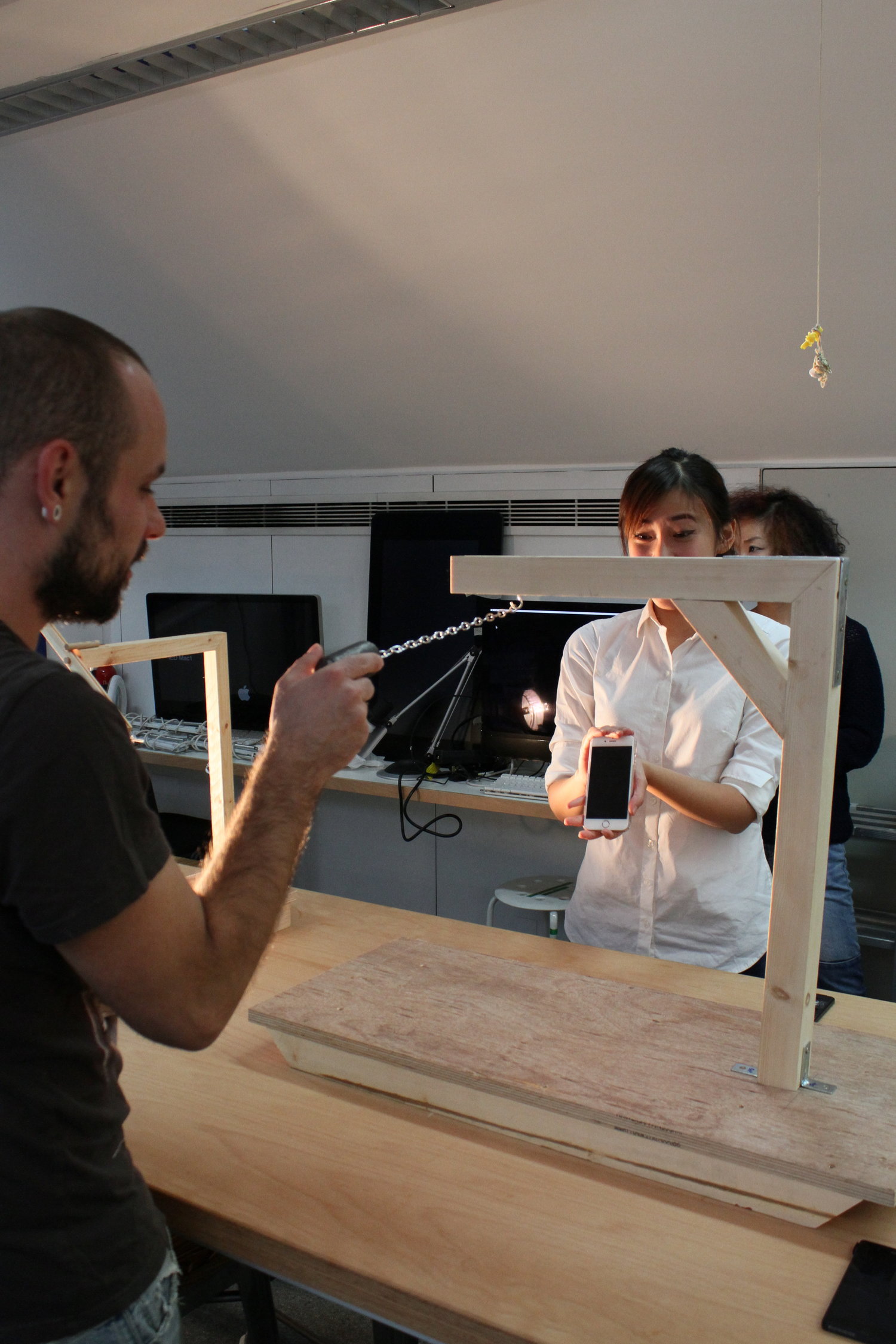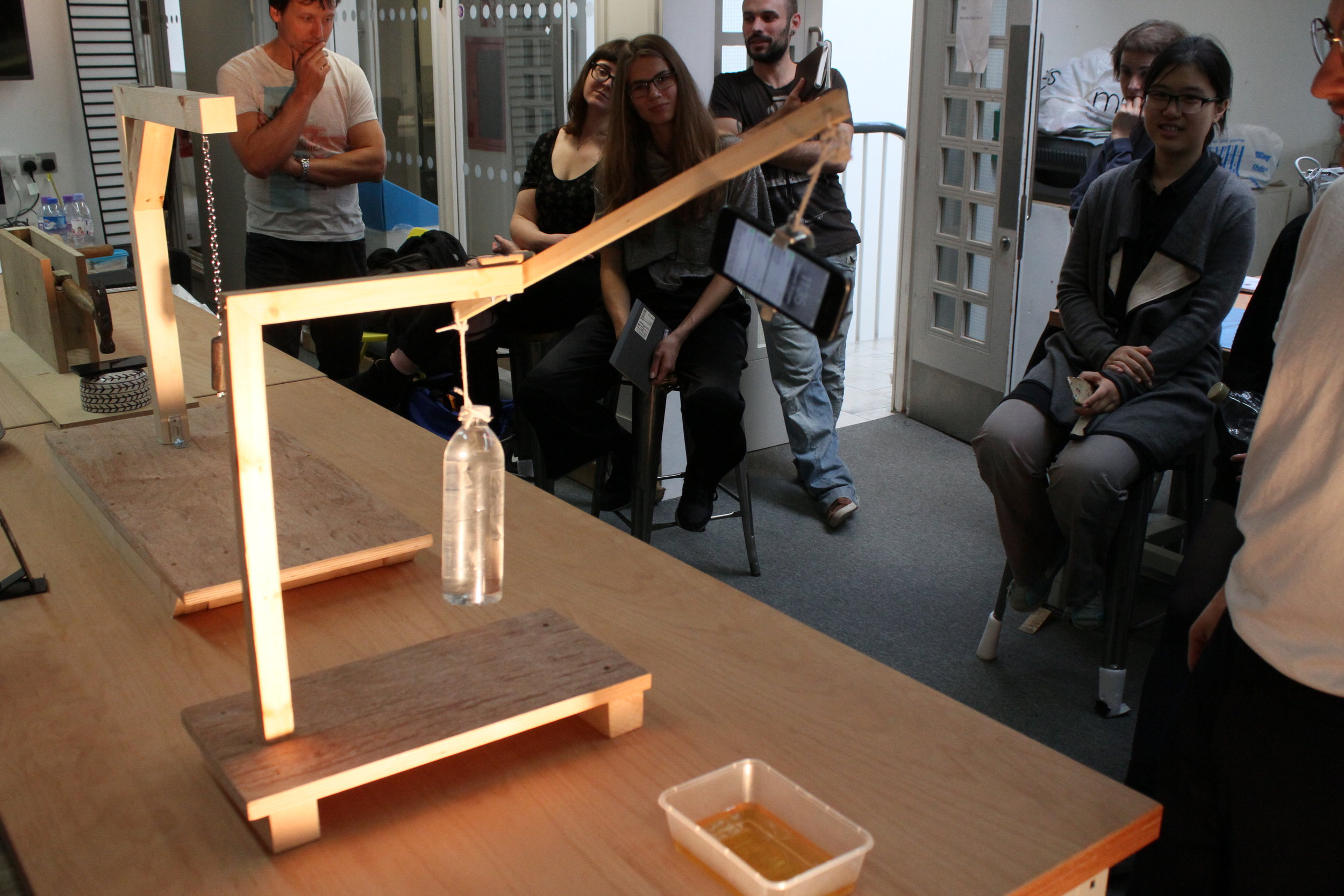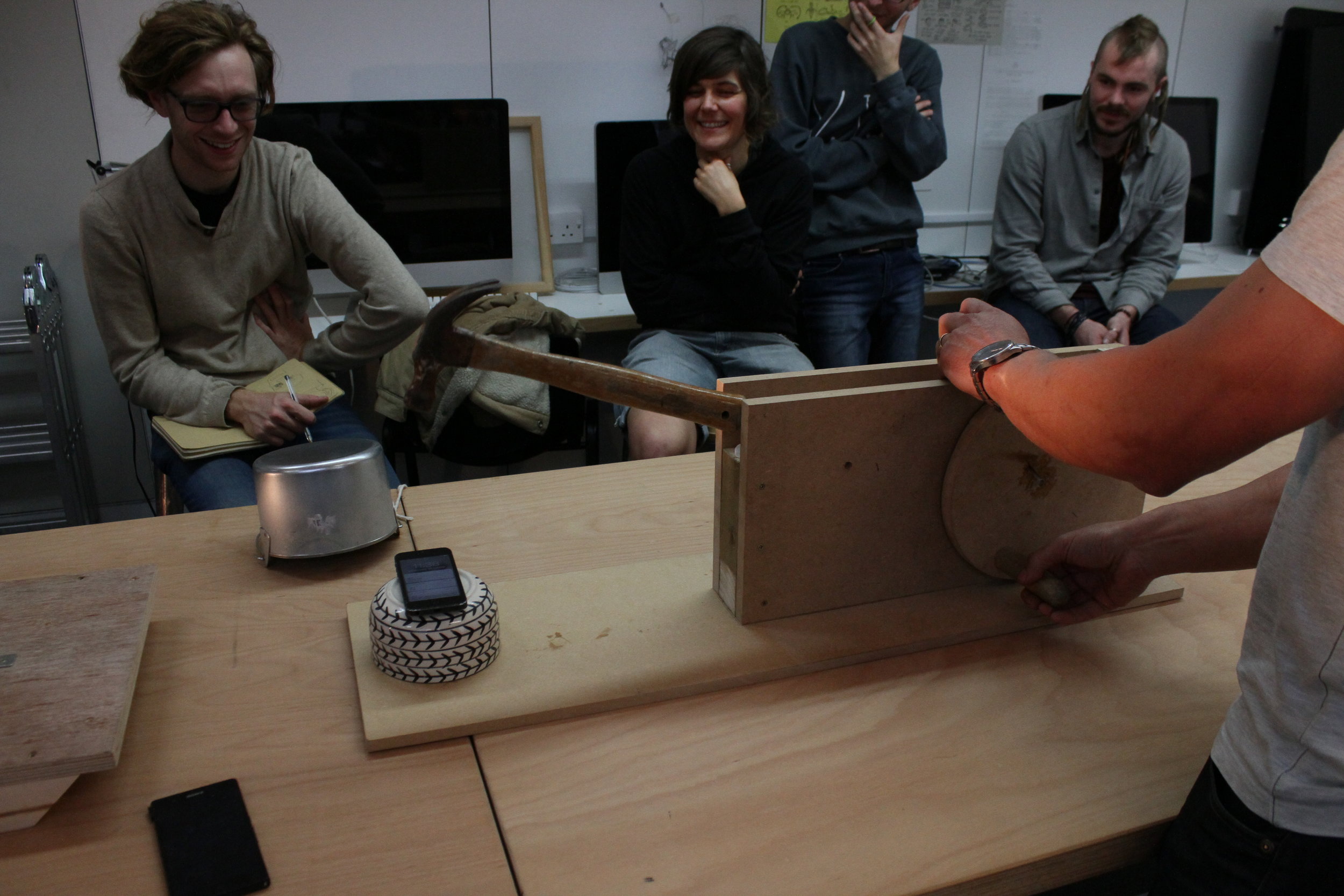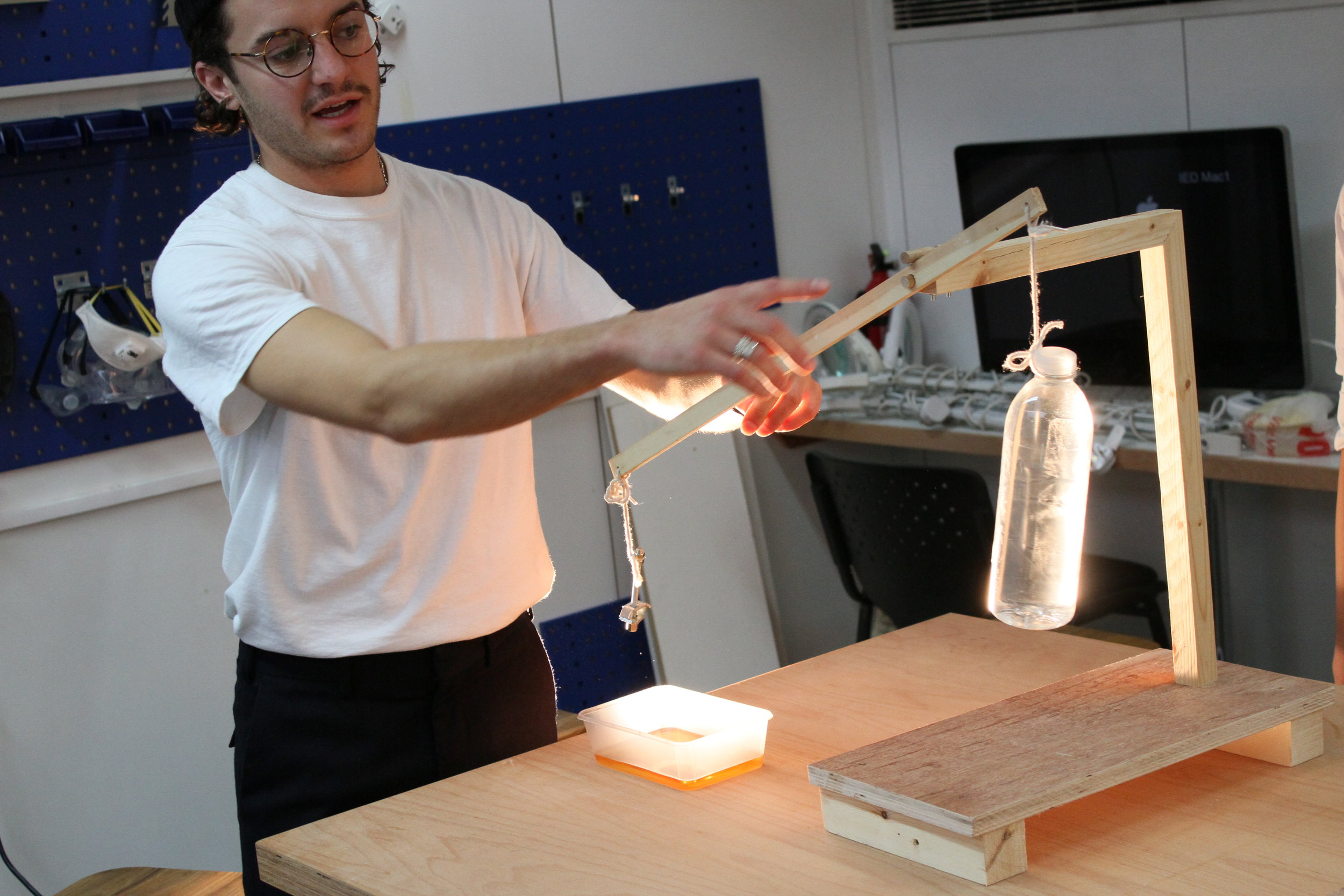Phone-wrecker
October 2016
wood, stone, metal
In collaboration with Greg Orrom Swan and
Robert Marshall.
Exhibited at STATE Festival: The Sentimental Machine (Nov 3–5, 2016) in Berlin.
October 2016
wood, stone, metal
In collaboration with Greg Orrom Swan and
Robert Marshall.
Exhibited at STATE Festival: The Sentimental Machine (Nov 3–5, 2016) in Berlin.
Anticipation is a dynamic, transitional state of emotion that manifests when we expect a certain outcome to happen. The intensity of anticipation – which may be combined with hope, excitement, apprehension, or fear – correlates strongly with how much we care about the impact of a particular outcome.
The Phone-Wrecker project is our playful exploration into human projections of emotion onto non-living materials, in particular current and emerging technologies. We put our own phones in potentially dangerous situations, highlighting the emotional attachment most of us have for these brittle, yet powerful devices that intimately involve themselves in our everyday life.
*No phones were harmed in the making of this project
The Phone-Wrecker project is our playful exploration into human projections of emotion onto non-living materials, in particular current and emerging technologies. We put our own phones in potentially dangerous situations, highlighting the emotional attachment most of us have for these brittle, yet powerful devices that intimately involve themselves in our everyday life.
*No phones were harmed in the making of this project

Human emotions have historically been beyond the reach of empirical science. Now new technologies including brain imaging and deep brain stimulation have opened up our abilities to not only observe, but also manipulate emotions.
At the same time, work in artificial intelligence has been working intensively on the topic of synthetic or robotic emotions in the hope that we can develop more and more human-like machine intelligences.
At the same time, work in artificial intelligence has been working intensively on the topic of synthetic or robotic emotions in the hope that we can develop more and more human-like machine intelligences.
In this context we may ask ourselves:
Can a machine ever have emotions?
Is that even desirable?
How easy is it to imitate human emotions?
Can a machine ever have emotions?
Is that even desirable?
How easy is it to imitate human emotions?
These machines were designed to elicit and evoke a emotional response that focuses on our connection most of us have with our phones. Some participants wanted to smash the phones, others wouldn't turn the crank, some tentatively removed pebbles to see the result. All of these responses show and emphatic, and frustrated relationship we humans have with these devices—some hate their devotion to their phone, others have a fondness to them and wish no harm comes to them.
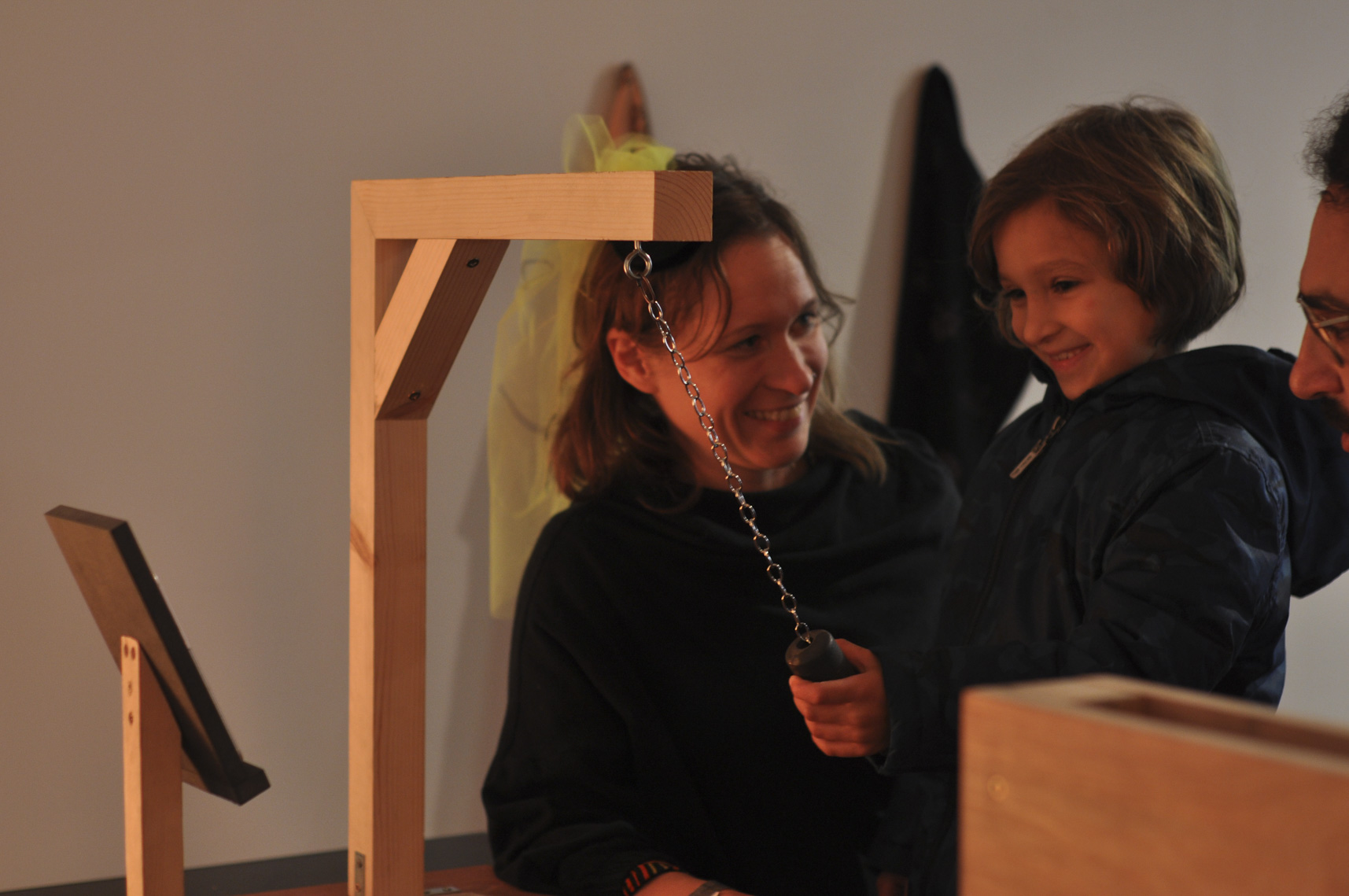

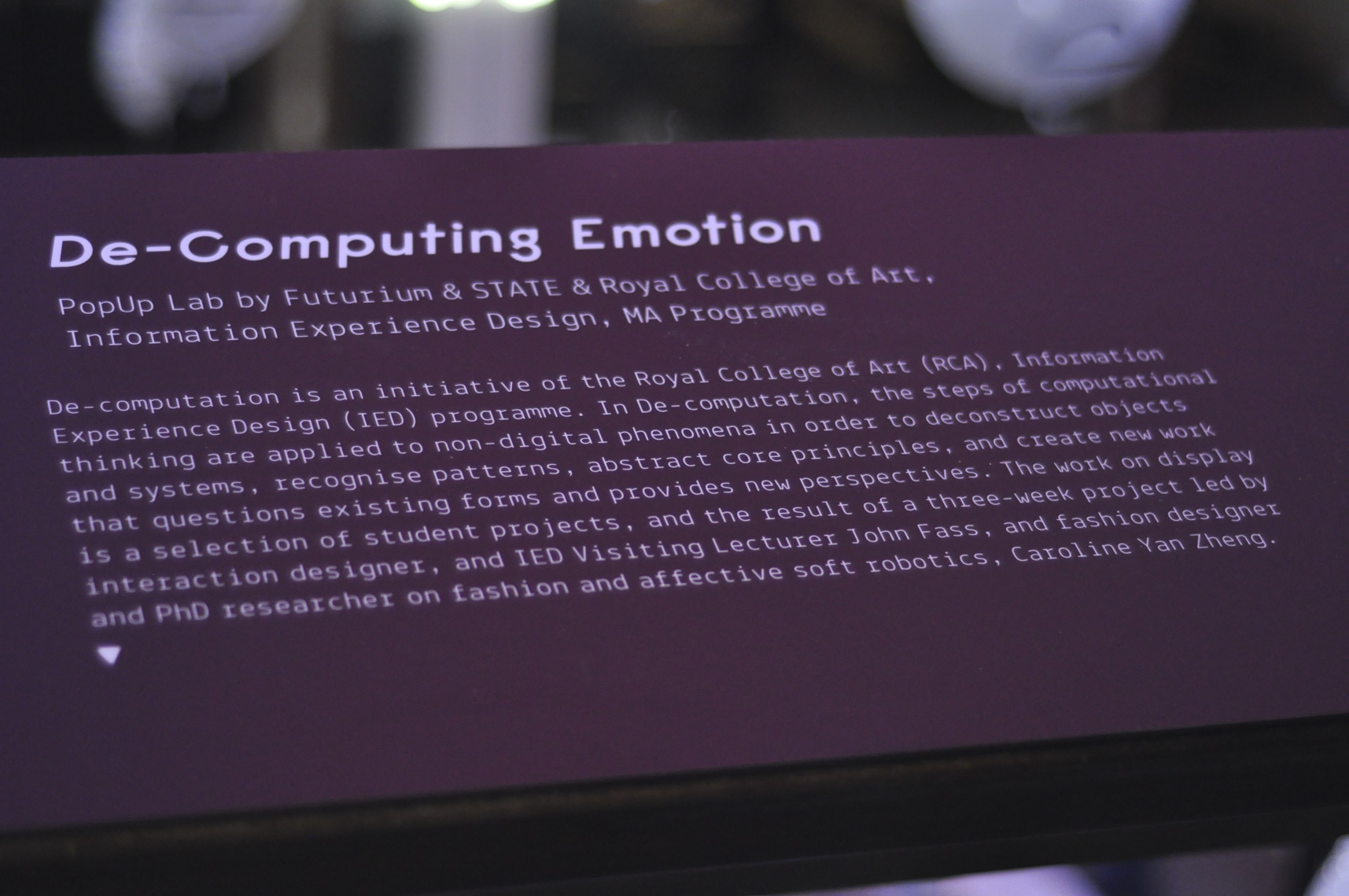
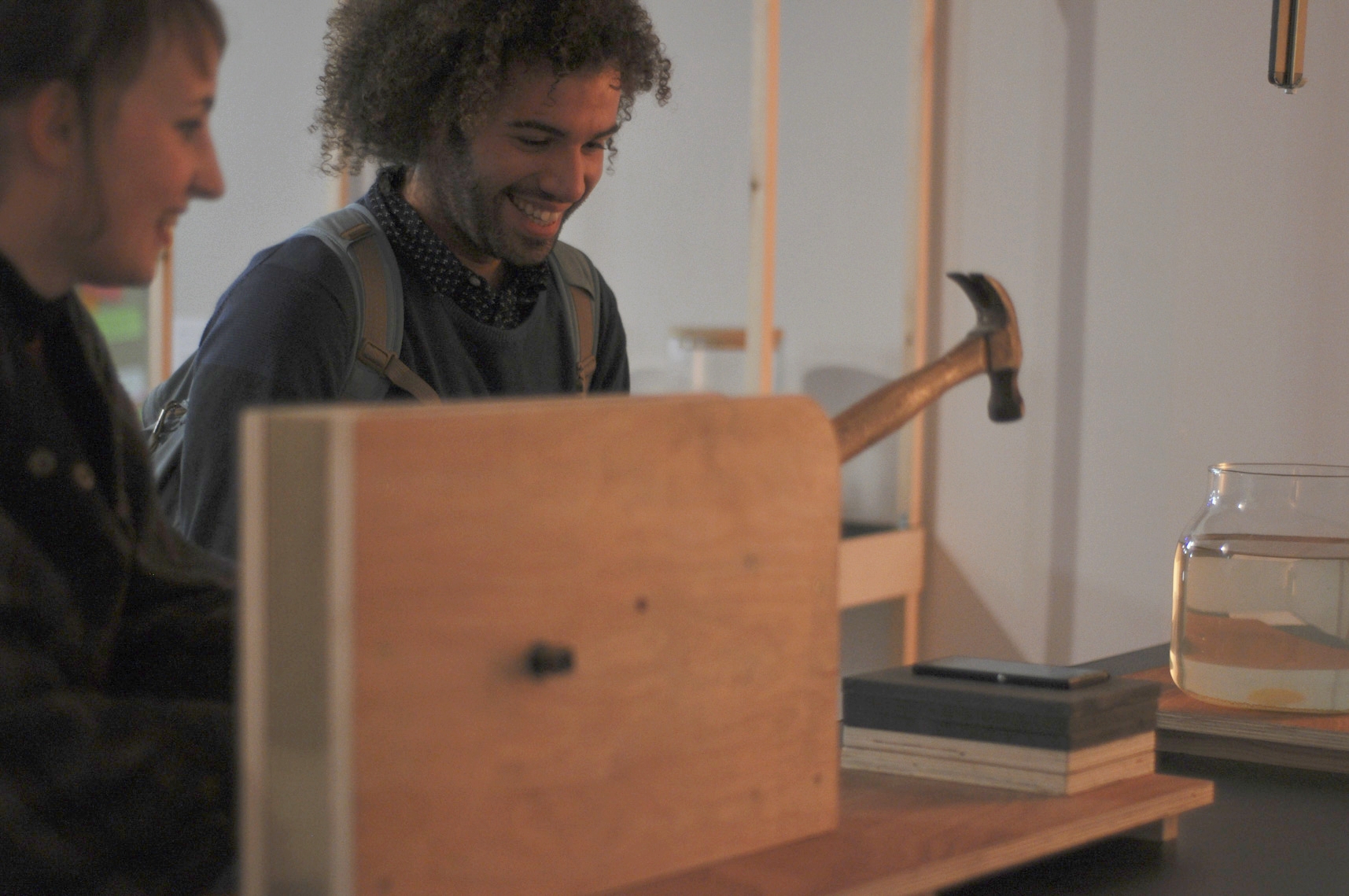

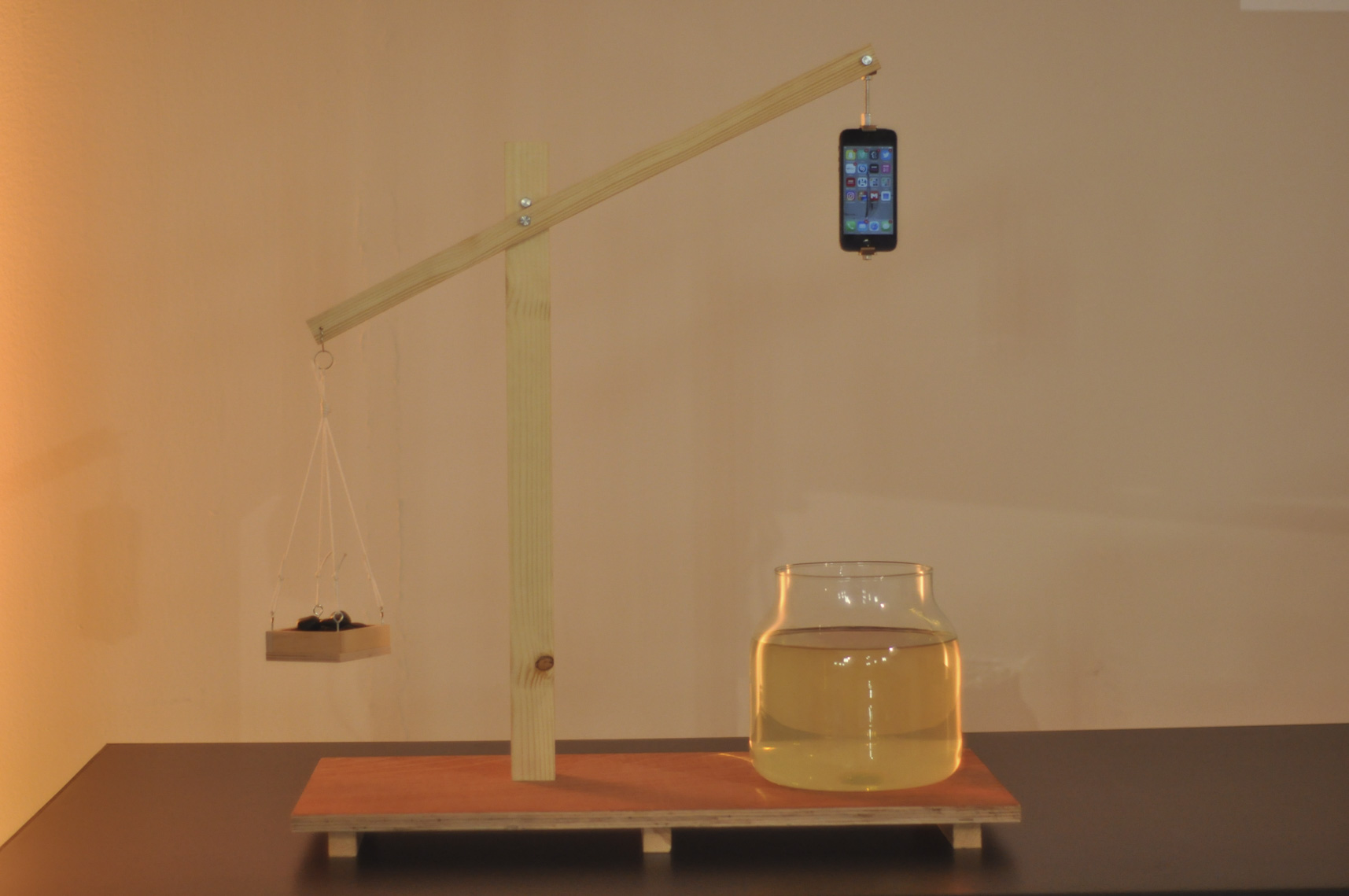
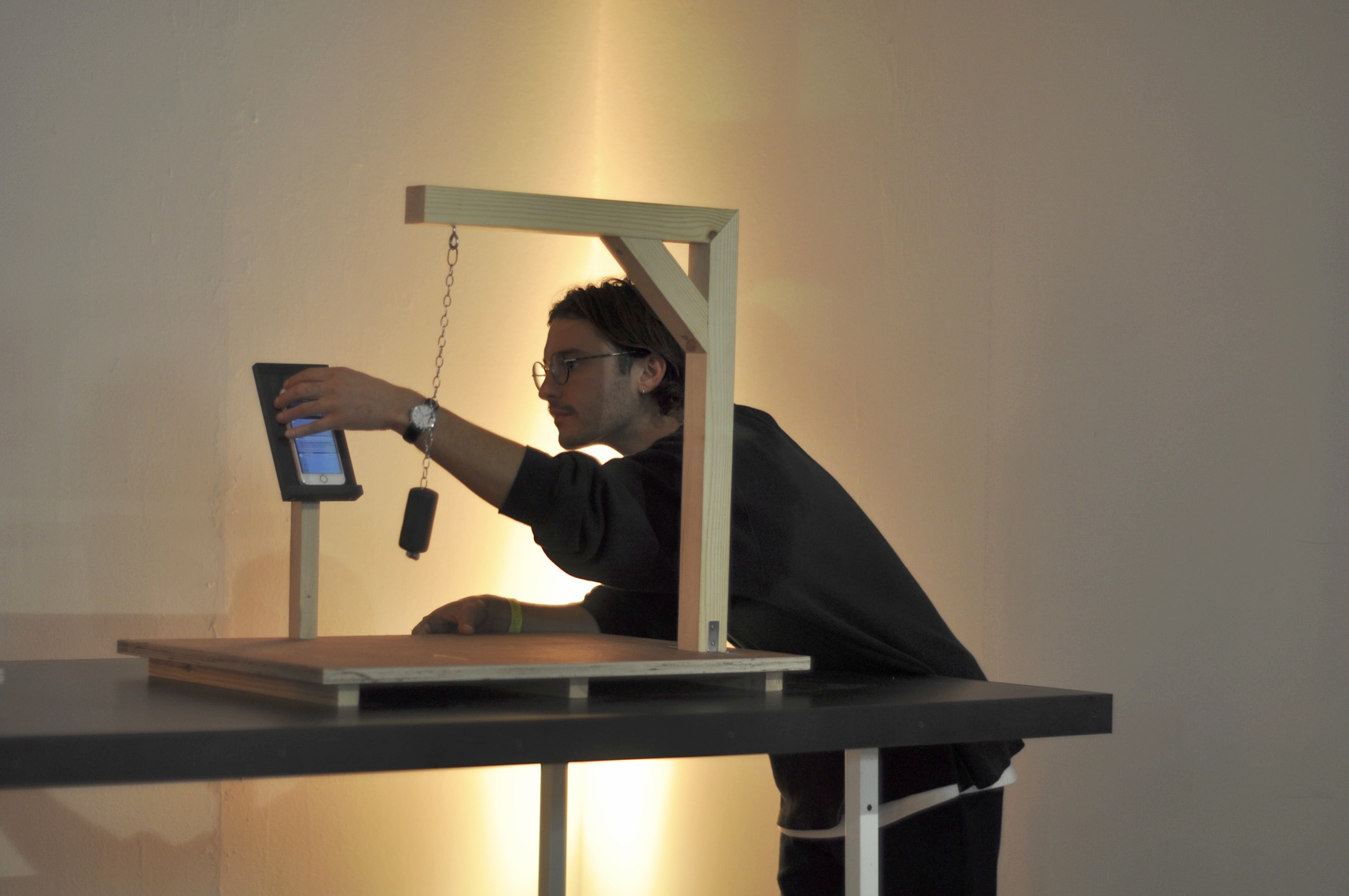
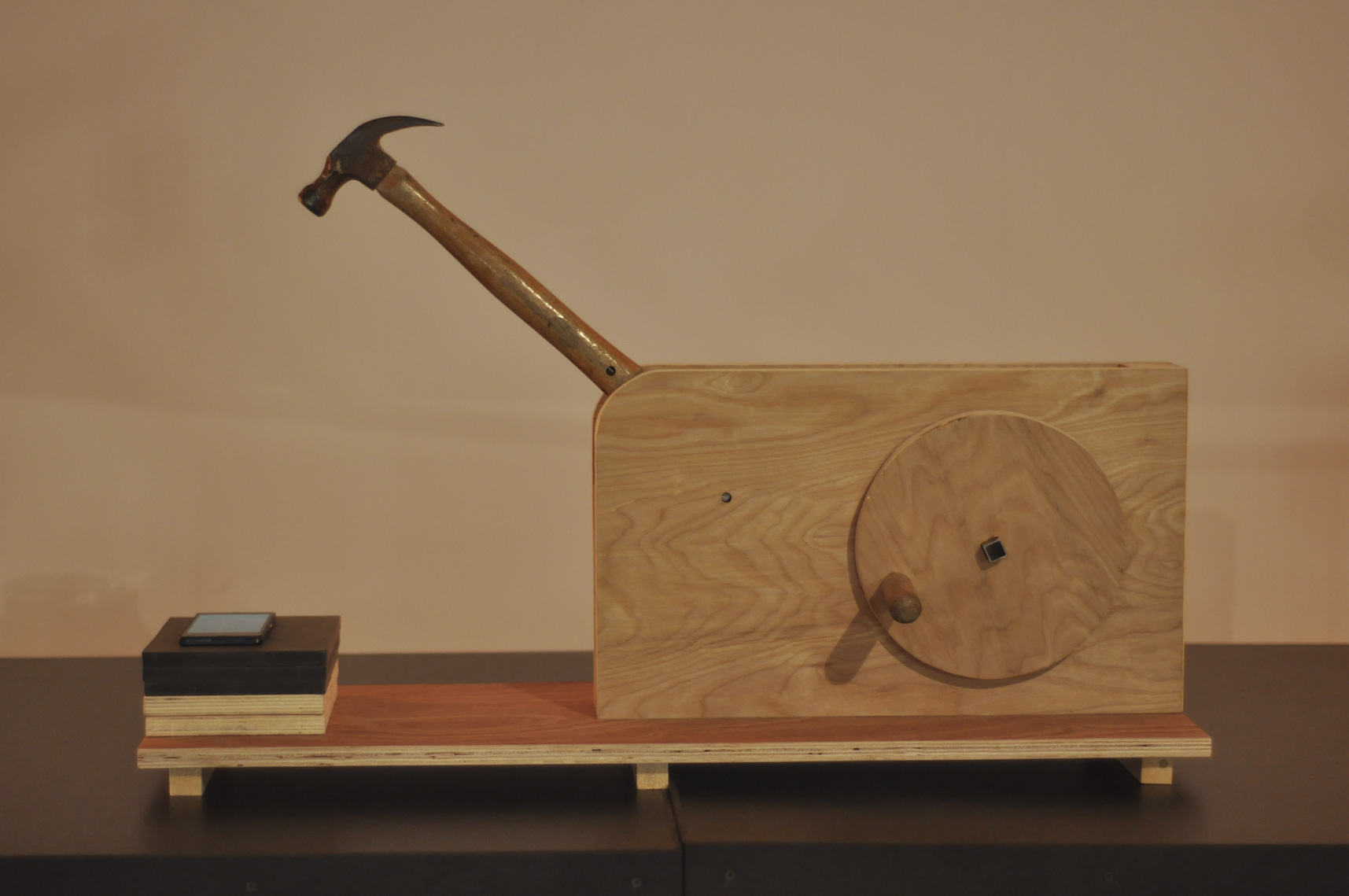
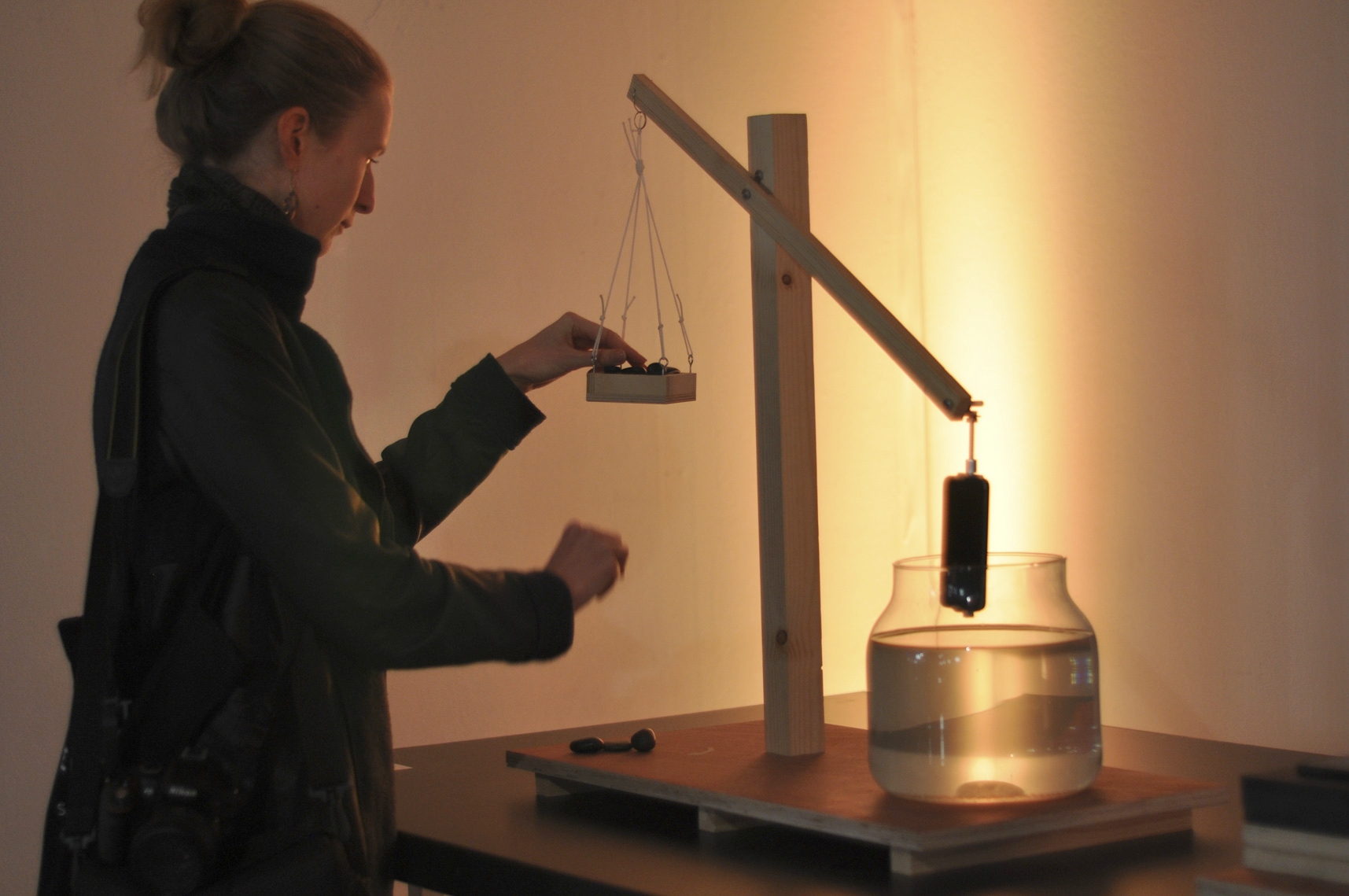


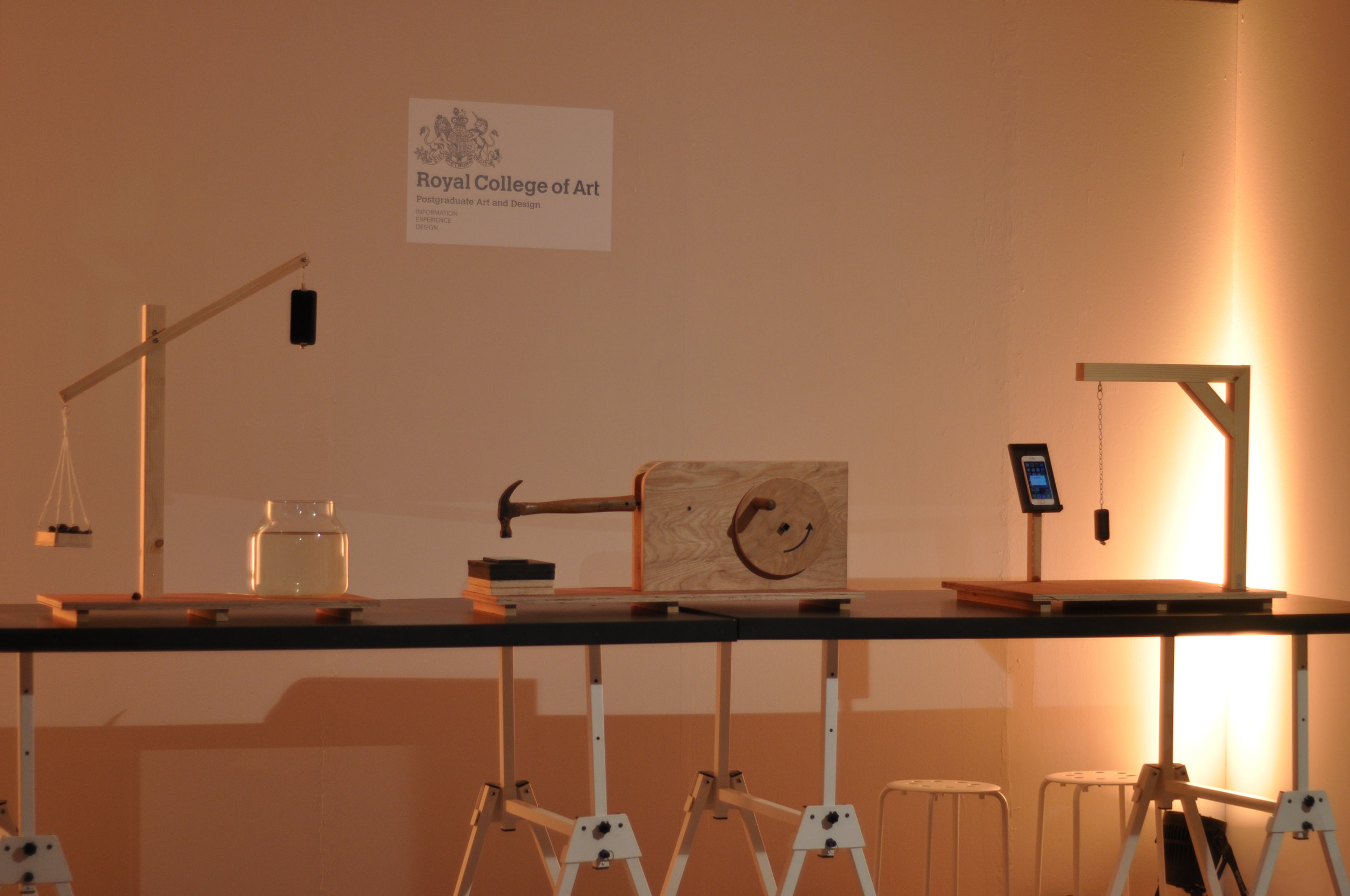
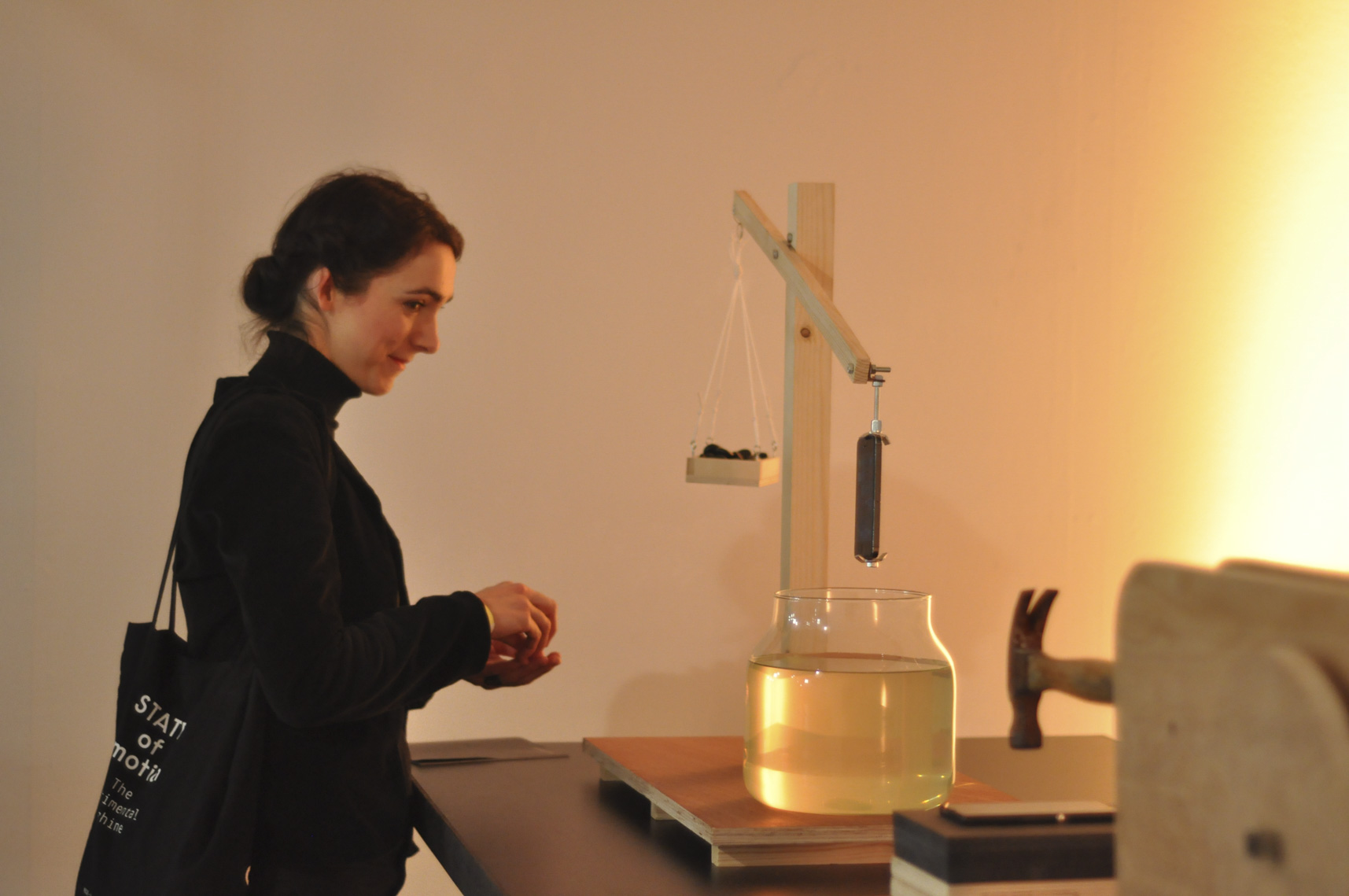

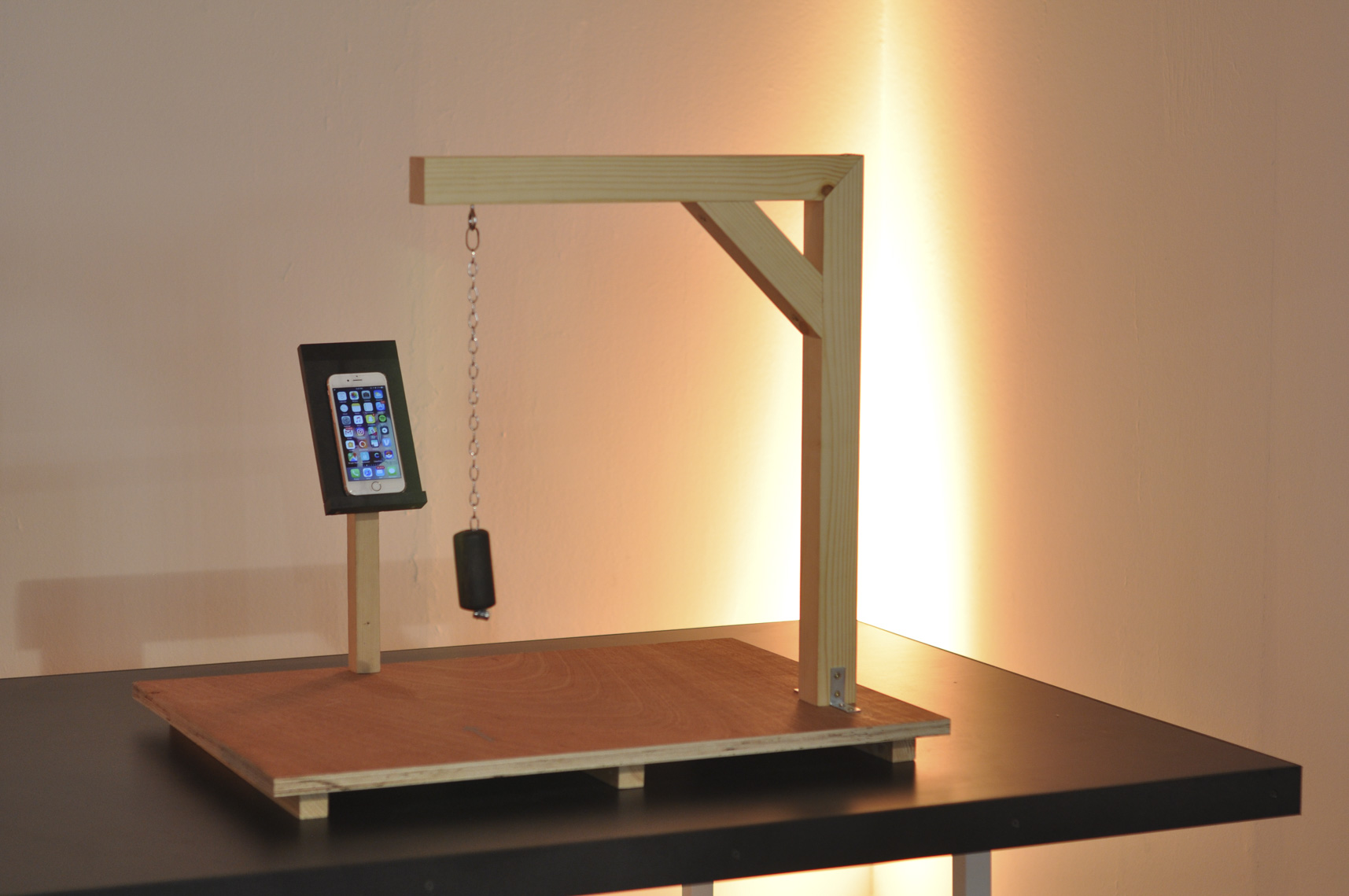




Process
Over three weeks, we looked into the mechanics of human emotions, paying close attention to visual and haptic feedbacks. Particularly, we were interested in anticipation – the build up that leads to expected outcomes, and how experience can be designed based on playing with this dynamic, transitional state of emotion.
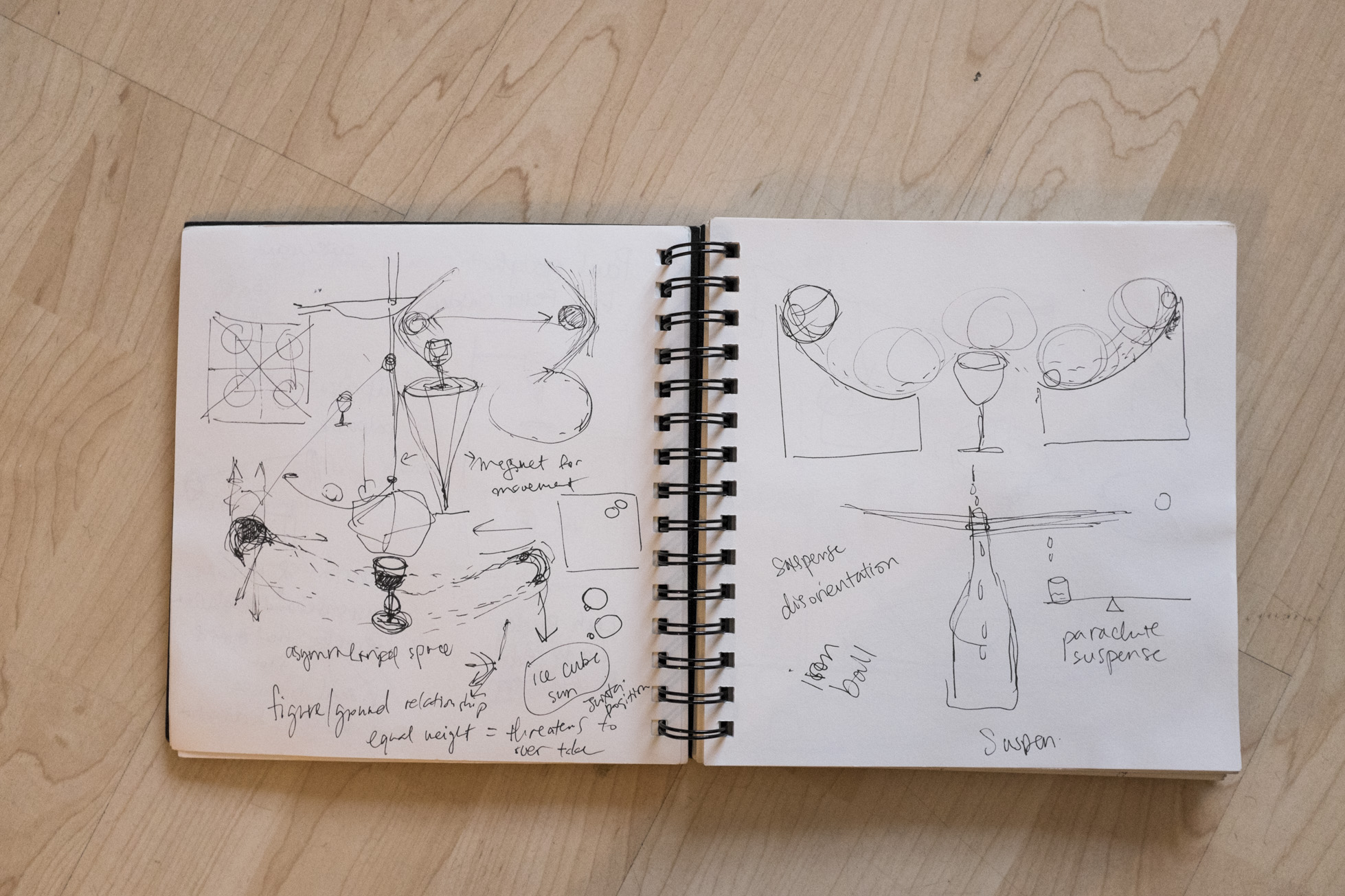
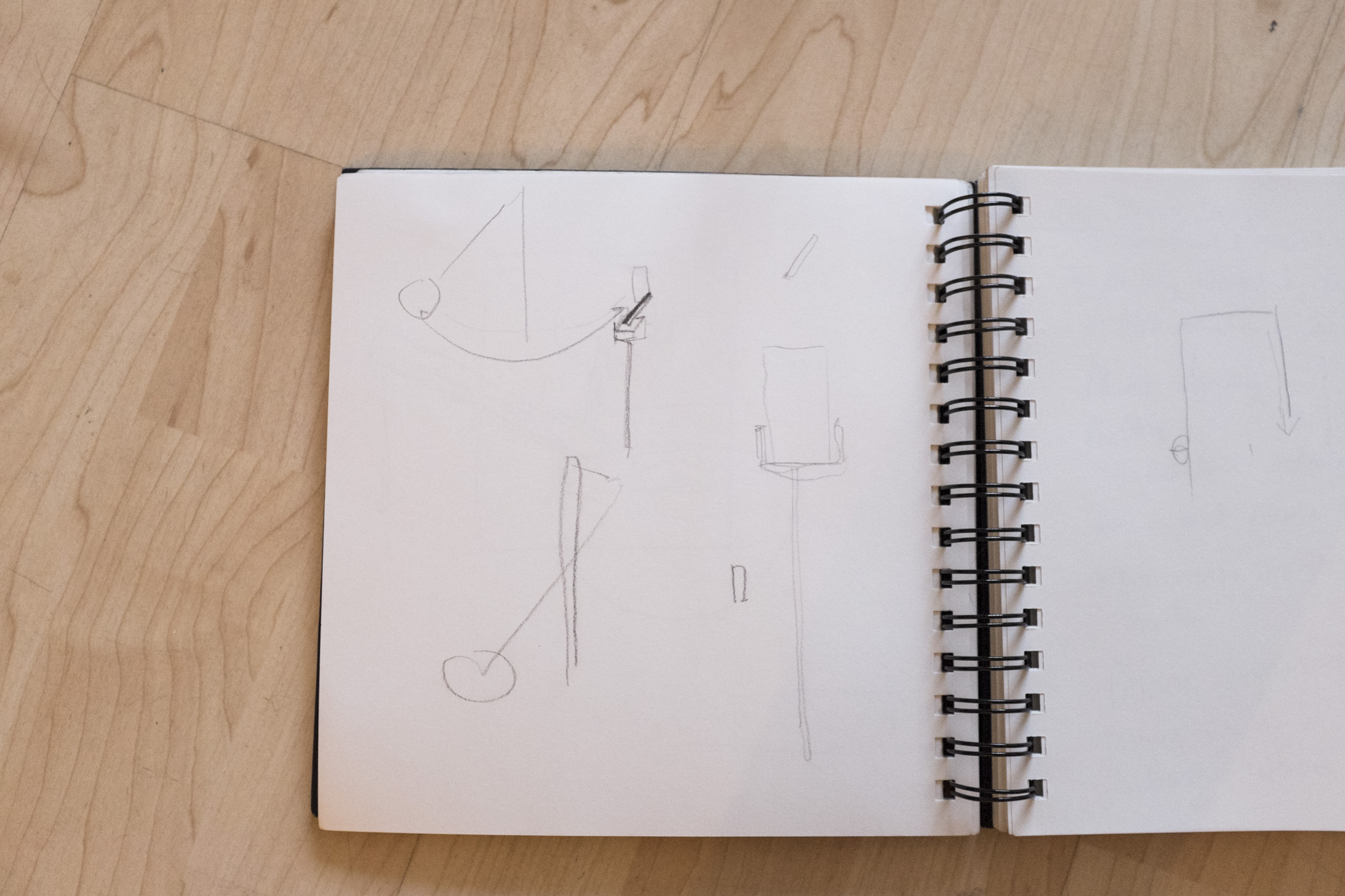
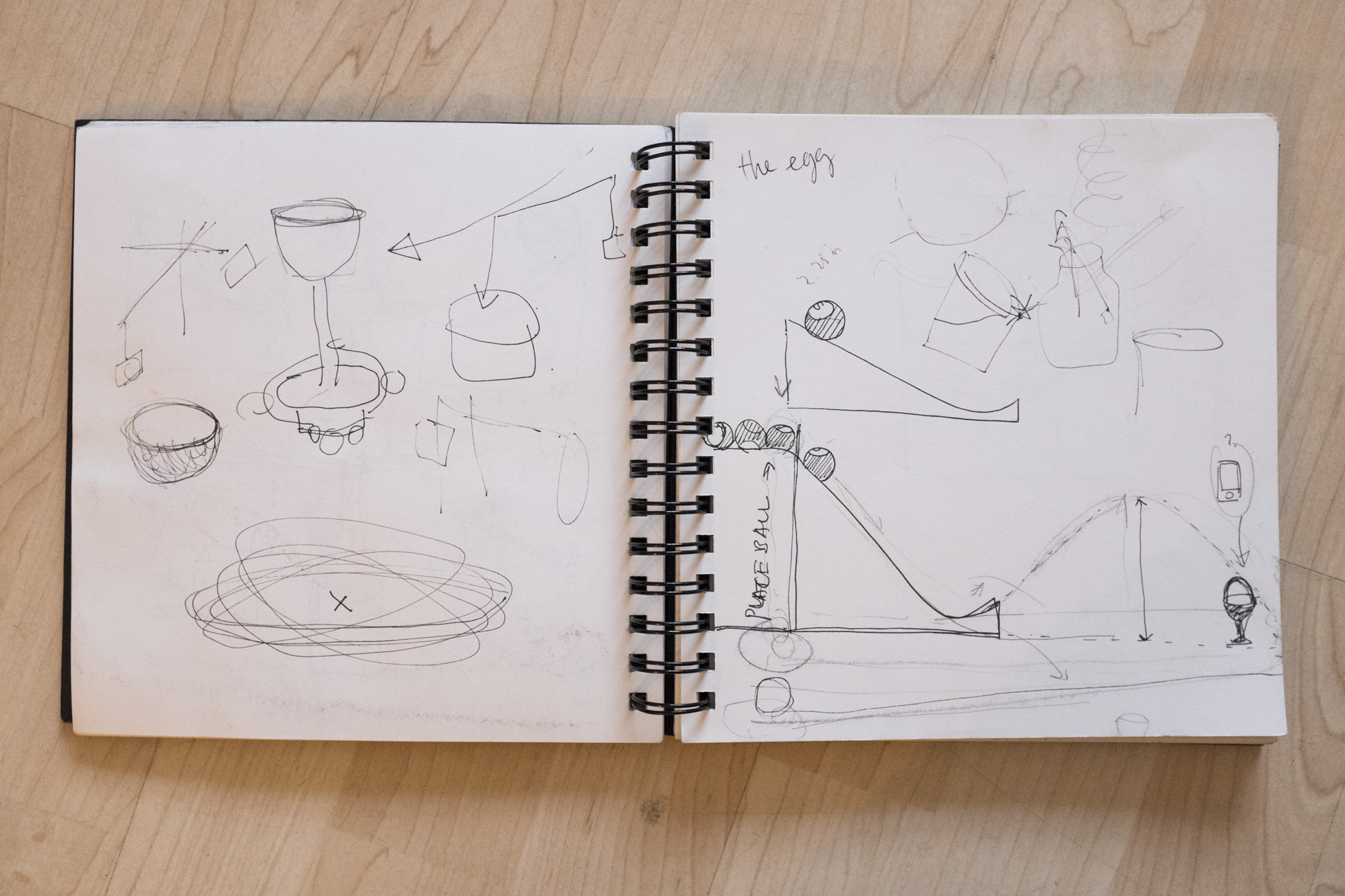
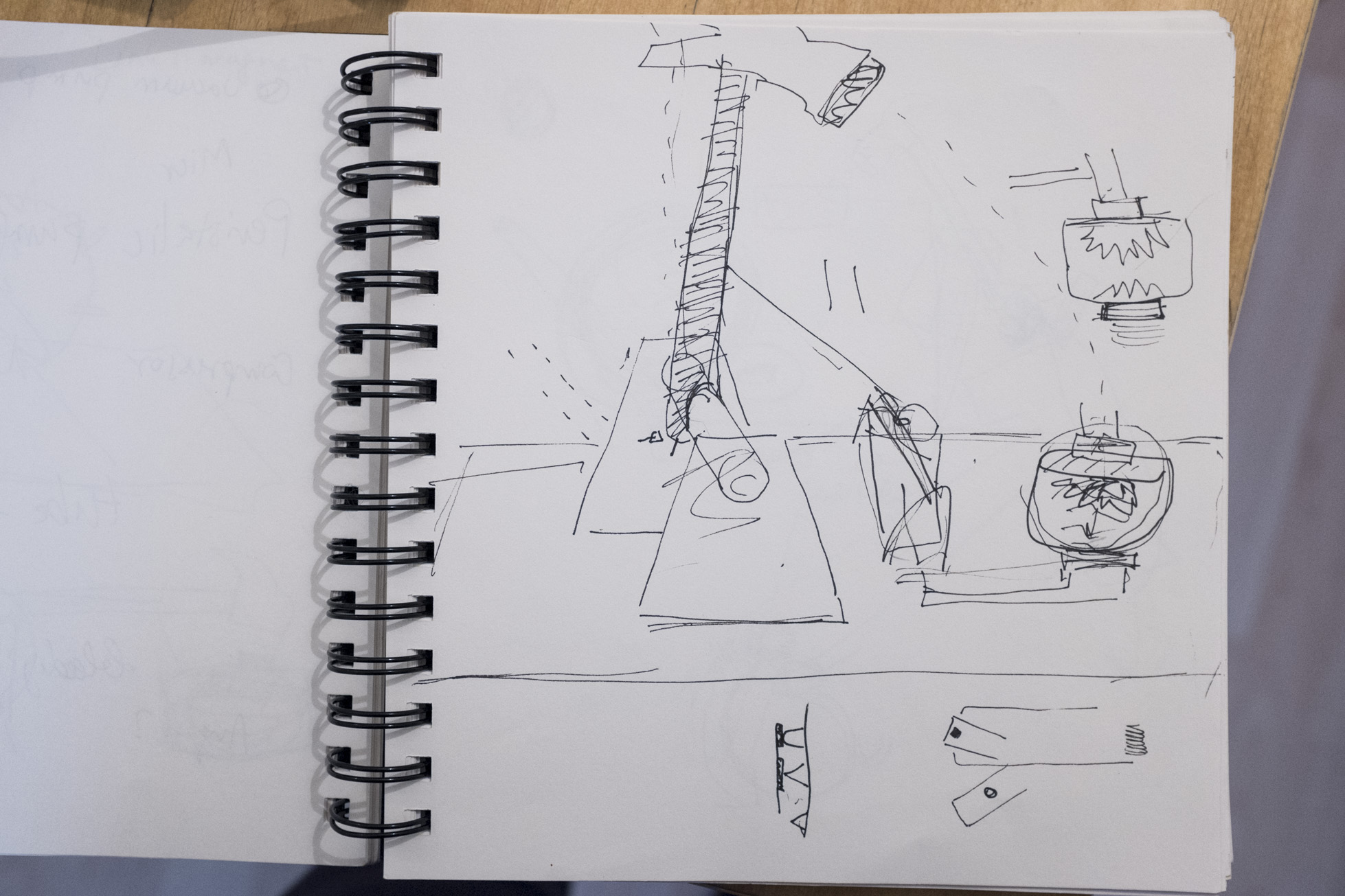
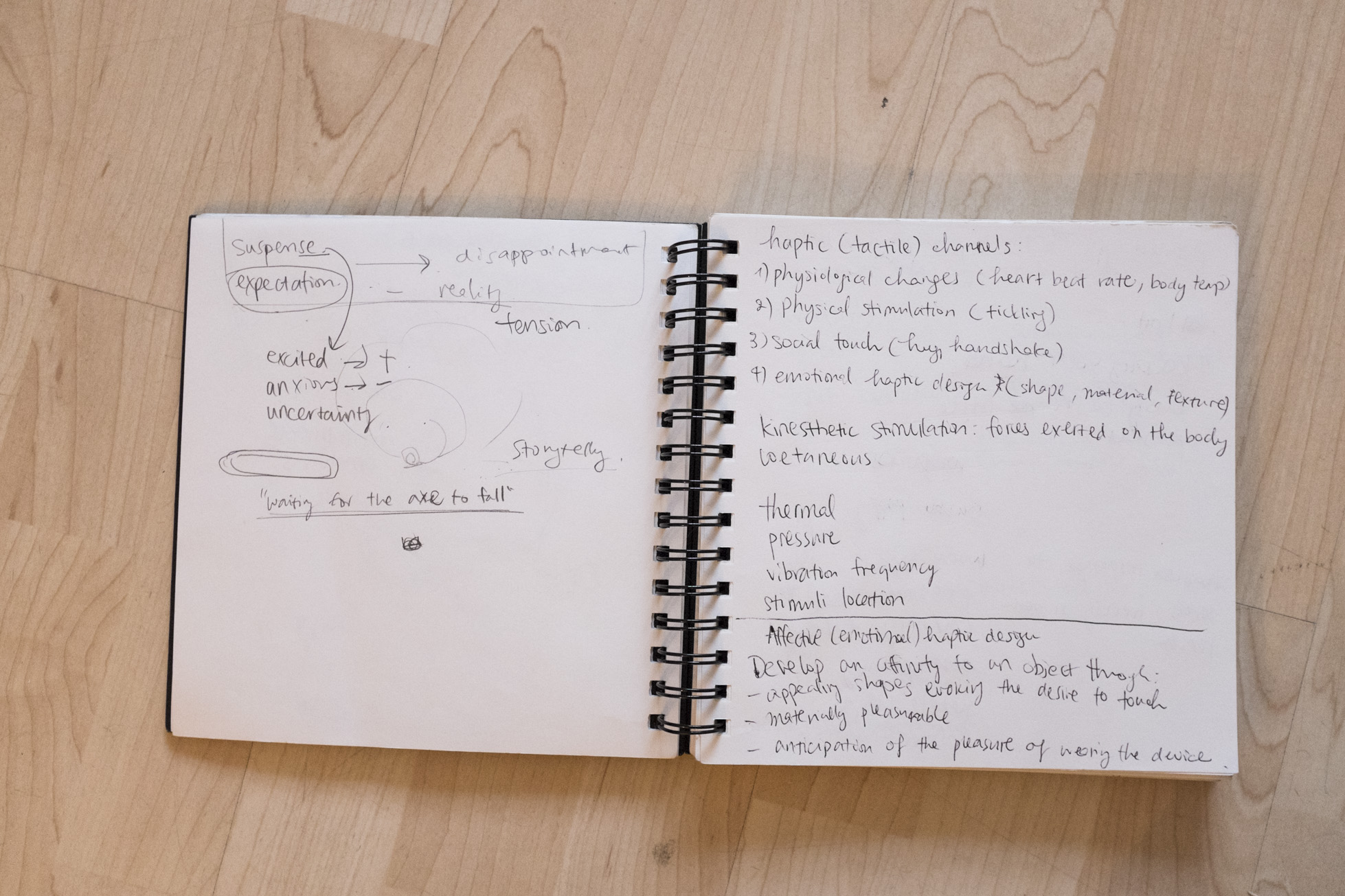
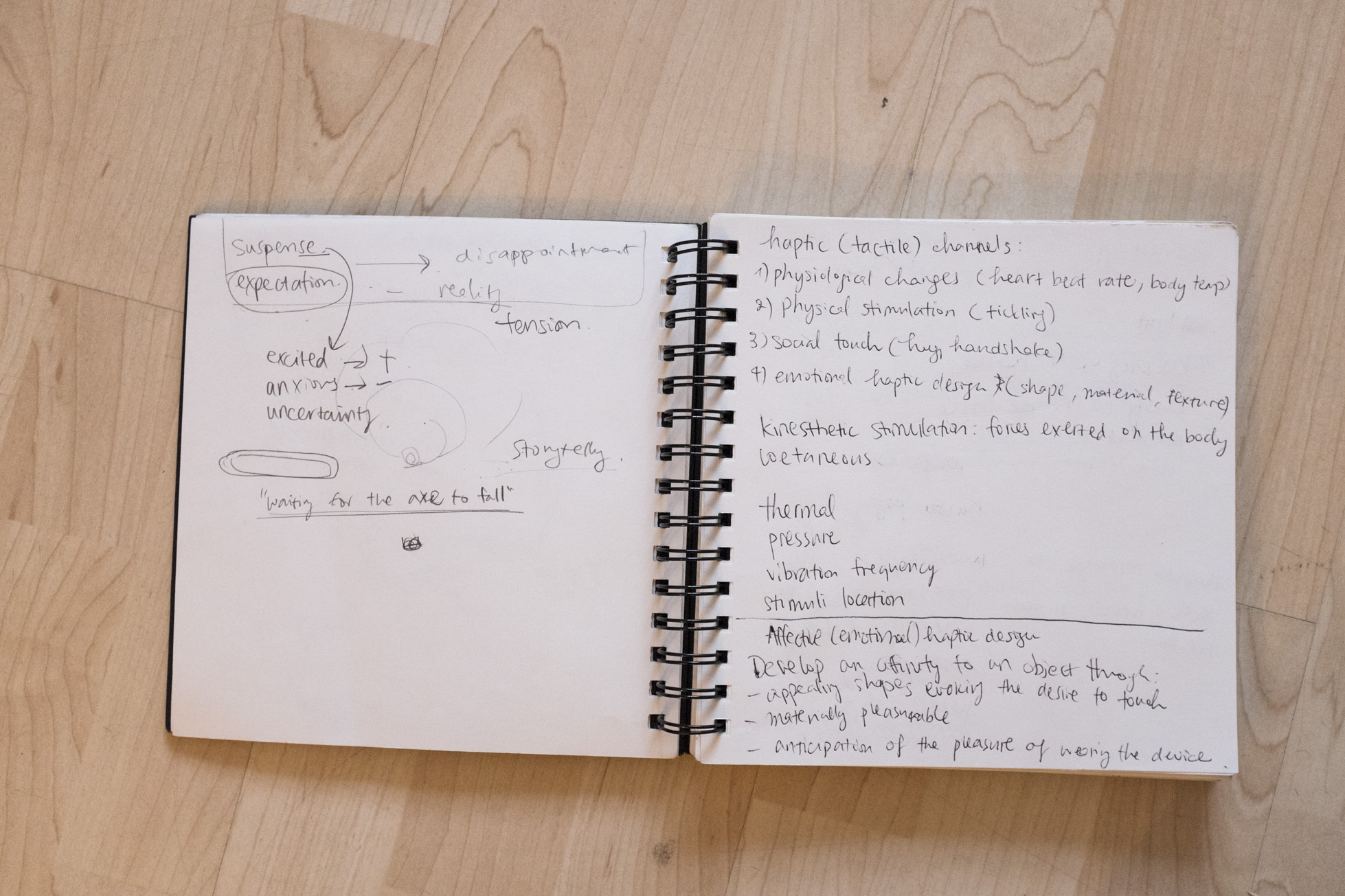
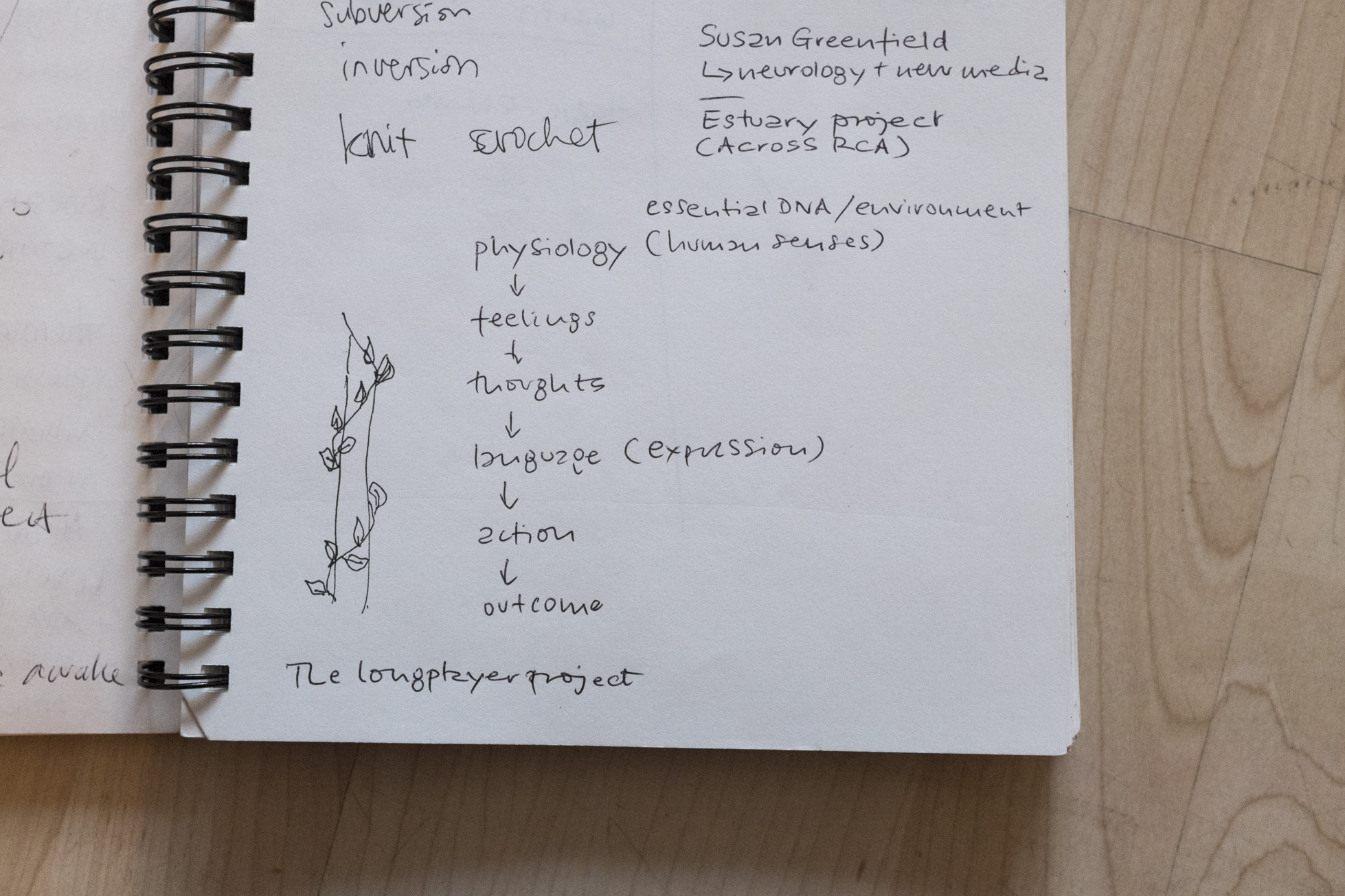
As we expanded the research into music, horror movies, and our own daily interactions, it became clear that there needs to be a certain level of investment in the outcome of the experience. We started off with putting fragile objects – eggs, balloons, even ferrofluid – at stake, but none seemed to evoke the emotional reaction we were hoping for.
It was until we tested out our first prototypes in class with our phones that we discovered the missing element: something we truly care about.
We might not realize yet how much we are emotionally attached to our non-living technological devices.
We might not realize yet how much we are emotionally attached to our non-living technological devices.
